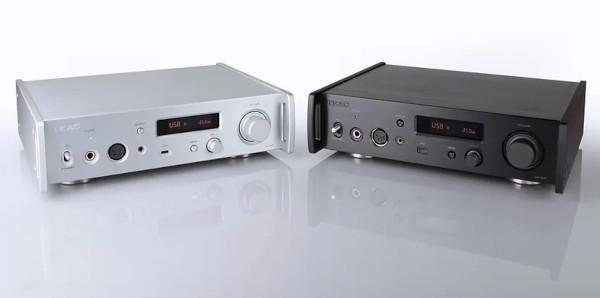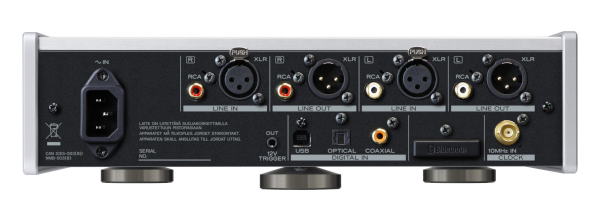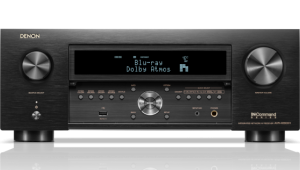Teac Announces Small but Mighty All-in-One DAC/Preamp/Headphone Amp

Slated to sell for $2,100 when it ships in late June, the new UD-507 is a redesign of the 500 Series UD-505X ($1,849) that incorporates design concepts borrowed from the company’s flagship 700 Series. At its heart is the proprietary TRDD 5 (Teac Reference Discrete DAC), which is based on the converter Teac developed for its $4,300 UD-701N USB DAC/network player, and an upgraded headphone amp.
“The design goal of this in-house-developed discrete DAC is to provide a more immersive musical experience for all listeners,” explained Teac brand manager Jo Yoshida. “Thanks to the clear soundstage and precise imaging, you will discover the breath and articulation of your favorite artists that you never noticed before.”
In technical terms, signals entering the TRDD 5 DAC are processed at 64bit/512fs by a delta-sigma modulator and converted to analog using 16 elements per channel (each element comprises a pair of logic circuits and a low-pass filter). (The circuitry itself is a field-programmable gate array (FPGA), a type of integrated circuit that can be reprogrammed.) The system supports 22.5MHz DSD and 384-kHz/32-bit PCM playback; DSD is processed directly, while PCM is converted to a 1-bit signal. Users can choose between two operating methods: multi-bit delta-sigma or 1-bit delta-sigma.

The UD-507 supports high-resolution LDAC/LHDC and aptX HD Bluetooth streaming as well as MQA decoding across all inputs (except Bluetooth) in addition to providing two RCA/balanced XLR analog inputs and four digital inputs: coaxial, optical, (asynchronous) USB Type-B (rear), and USB Type-C (front). The preamp features a balanced, dual-mono circuit configuration for improved channel separation and employs Teac’s precision QVCS quad volume control system and HCLD2 high-current line driver buffering circuits on all outputs.
For headphone listening, the UD-507’s dedicated amplifier offers three front-panel inputs — 6.3-mm (¼-inch), four-pin XLR, and 4.4mm Pentaconn — and provides low-, mid-, and high-gain settings to accommodate different headphone sensitivities and impedances between 16 and 600 ohms. Rated power output in balanced mode is 1,200 milliwatts/channel (at 100 ohms), a significant boost over its predecessor. Teac likens the increased power to the output of a dedicated headphone amp (sans DAC).
In an effort to avoid mutual interference and improve the purity of analog signals, the UD-507 is equipped with two toroidal transformers — one for the analog section of the DAC, the other for the digital processor — and uses a no-feedback circuit design for its analog power supply to enhance musicality.
Everything is housed in an 11.4 x 3.3 x 9.8-inch box built to combat vibration. In addition to a 2.8-mm-thick top plate, there’s a gap between the component’s bottom plate and shock-absorbing feet, and the transformer (which is prone to vibration) is suspended from the base plate in a floating structure. For more information, visit teac.jp.


















































